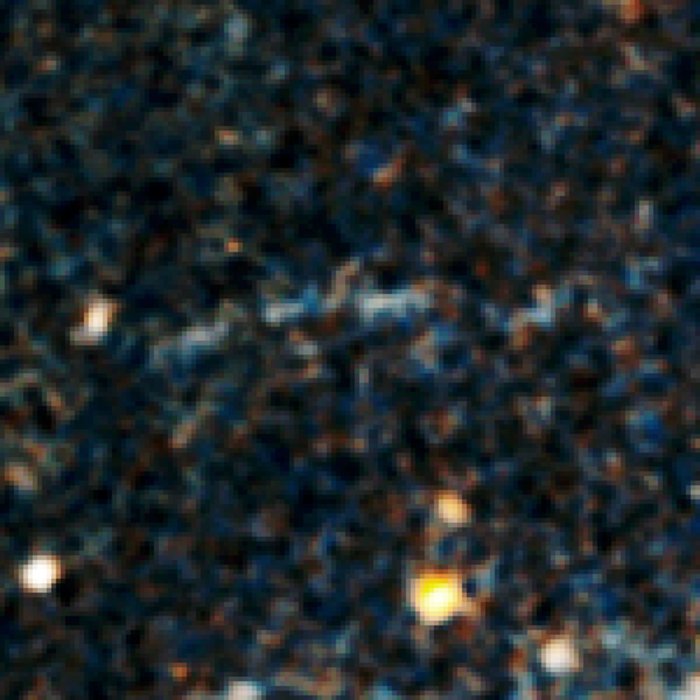Giant gravitational arc
Seeing is believing, except when you don't believe what you see. Astronomers using NASA's Hubble Space Telescope have found a puzzling arc of light behind an extremely massive cluster of galaxies residing 10 billion light-years away. The galactic grouping, discovered by NASA's Spitzer Space Telescope, was observed when the universe was roughly a quarter of its current age of 13.7 billion years.
The giant arc is the stretched shape of a more distant galaxy whose light is distorted by the monster cluster's powerful gravity, an effect called gravitational lensing. The trouble is, the arc shouldn't exist.
Credit:NASA, ESA/Hubble, and A. Gonzalez (University of Florida, Gainesville, USA), A. Stanford (University of California, Davis and Lawrence Livermore National Laboratory, USA) and M. Brodwin (University of Missouri-Kansas City and Harvard-Smithsonian Center for Astrophysics, USA).
About the Image
About the Object
| Name: | IDCS J1426.5+3508 |
| Type: | Early Universe : Galaxy : Type : Gravitationally Lensed |
| Constellation: | Bootes |
| Category: | Cosmology |
Wallpapers
Coordinates
| Position (RA): | 14 26 32.74 |
| Position (Dec): | 35° 8' 37.30" |
| Field of view: | 0.16 x 0.16 arcminutes |
| Orientation: | North is 8.7° left of vertical |
Colours & filters
| Band | Wavelength | Telescope |
|---|---|---|
| Optical I | 814 nm |
Hubble Space Telescope
ACS |
| Infrared H | 1.6 μm |
Hubble Space Telescope
WFC3 |


